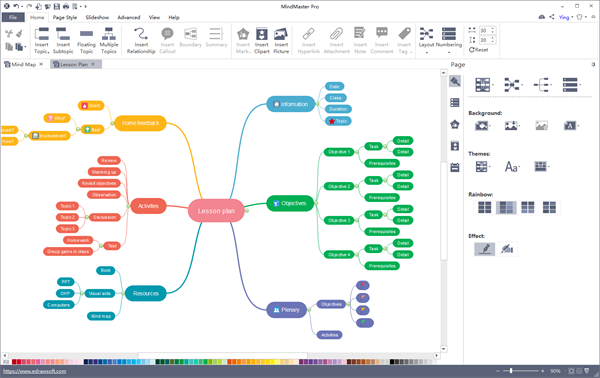Shop At Haya: Your Ultimate Shopping Guide
Discover the best shopping tips, trends, and deals for a smarter buying experience.
Sketch Your Thoughts: The Fun of Mind Mapping
Unlock your creativity! Discover how mind mapping can transform your thoughts into colorful sketches and boost your productivity. Dive in now!
Unlocking Creativity: How Mind Mapping Enhances Your Thinking Process
Unlocking Creativity can be a daunting task, especially when faced with complex problems or ideas. However, using mind mapping as a visual tool can significantly enhance your thinking process. By organizing thoughts into a structured format, mind mapping allows you to break down large concepts into manageable parts. This method encourages lateral thinking, as it enables you to see connections between ideas that might not be immediately obvious. As a result, you can generate new ideas and solutions effortlessly, leading to increased creativity and better problem-solving capabilities.
Incorporating mind mapping into your routine can transform your approach to brainstorming and project planning. Start by writing down your central idea in the center of a page. From there, draw branches to represent related themes or subtopics. Each branch can further expand into smaller nodes, allowing your thoughts to flow freely. Consider these benefits of mind mapping:
- Improves memory retention
- Encourages creative thinking
- Facilitates better organization of ideas
Ultimately, embracing mind mapping not only enhances your thinking process but also unlocks your full creative potential.

5 Easy Steps to Create Your First Mind Map
Creating your first mind map can be an exciting and rewarding experience. To get started, begin with your central idea or topic placed in the center of a blank page. Make sure to highlight the main concept using a larger font or a different color. This will serve as the focal point from which you will branch out further. Once your central idea is in place, it's time to identify key subtopics that relate to your main idea, which will form the branches of your mind map.
Next, draw lines connecting your central idea to each of these subtopics. Use a variety of colors and shapes to categorize different branches, as this visual differentiation will enhance understanding and recall. After connecting the subtopics, you can start adding smaller branches, incorporating keywords, images, or even short phrases that relate to each subtopic. Finally, take a step back and review your mind map. Ensure that the layout is clear and that the relationships between ideas are easy to follow, completing your first mind map in just five easy steps!
Mind Mapping vs. Traditional Note-Taking: Which is More Effective?
Mind mapping and traditional note-taking are two popular techniques for organizing information, yet they cater to different learning styles and purposes. While traditional note-taking often involves linear outlines or bullet points, which can be effective for straightforward information capture, it may lack the visual engagement needed for deeper understanding. Mind mapping, in contrast, promotes a more holistic approach by allowing users to visualize relationships between concepts through a structured diagram. This technique encourages creative thinking and can result in a more comprehensive grasp of the material.
When considering which method is more effective, it ultimately depends on the individual's learning preference. Many find that mind mapping enhances retention by using colors, images, and free associations, making information more memorable. On the other hand, proponents of traditional note-taking argue that it fosters discipline and linear thought processes, which are crucial for certain academic or professional settings. In conclusion, both methods have their merits, and the most effective approach may be to incorporate elements of both mind mapping and traditional note-taking to cater to various learning needs.